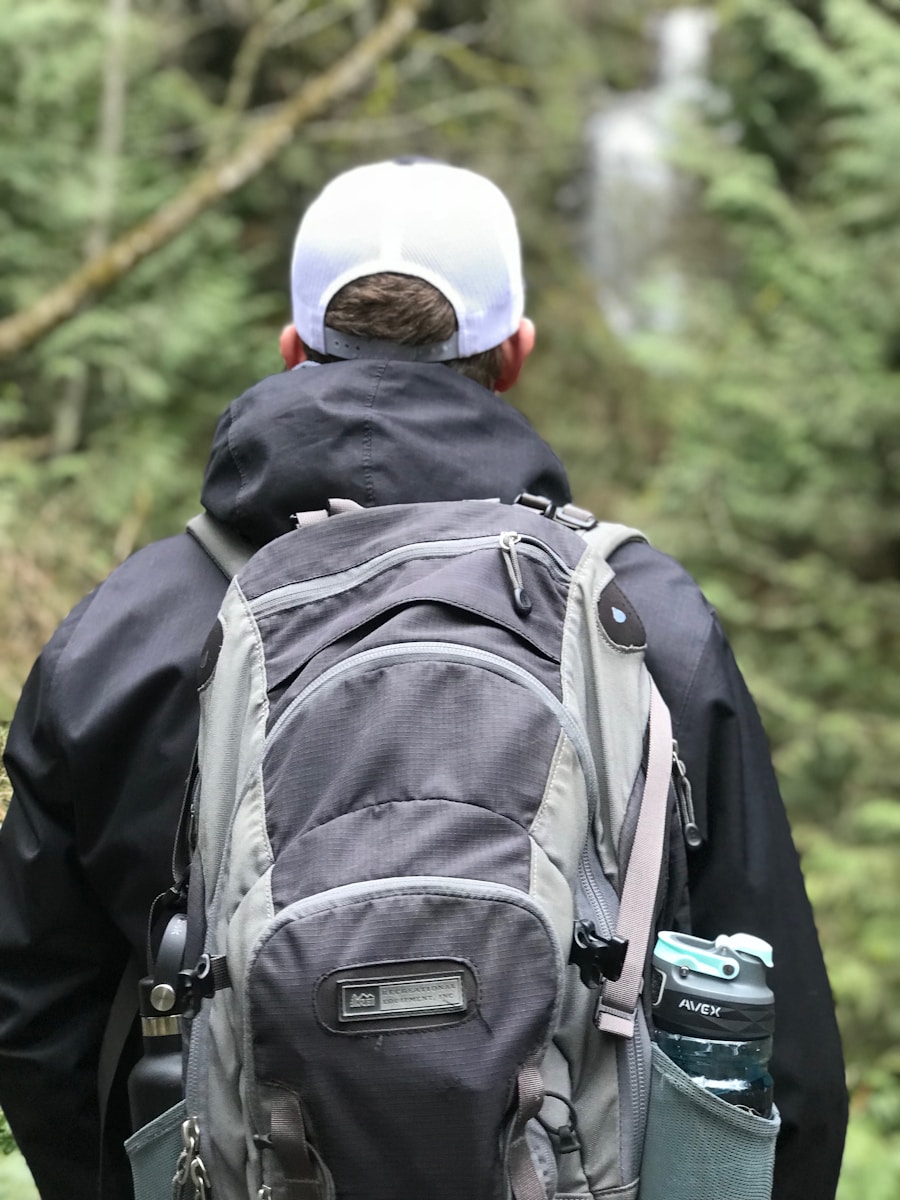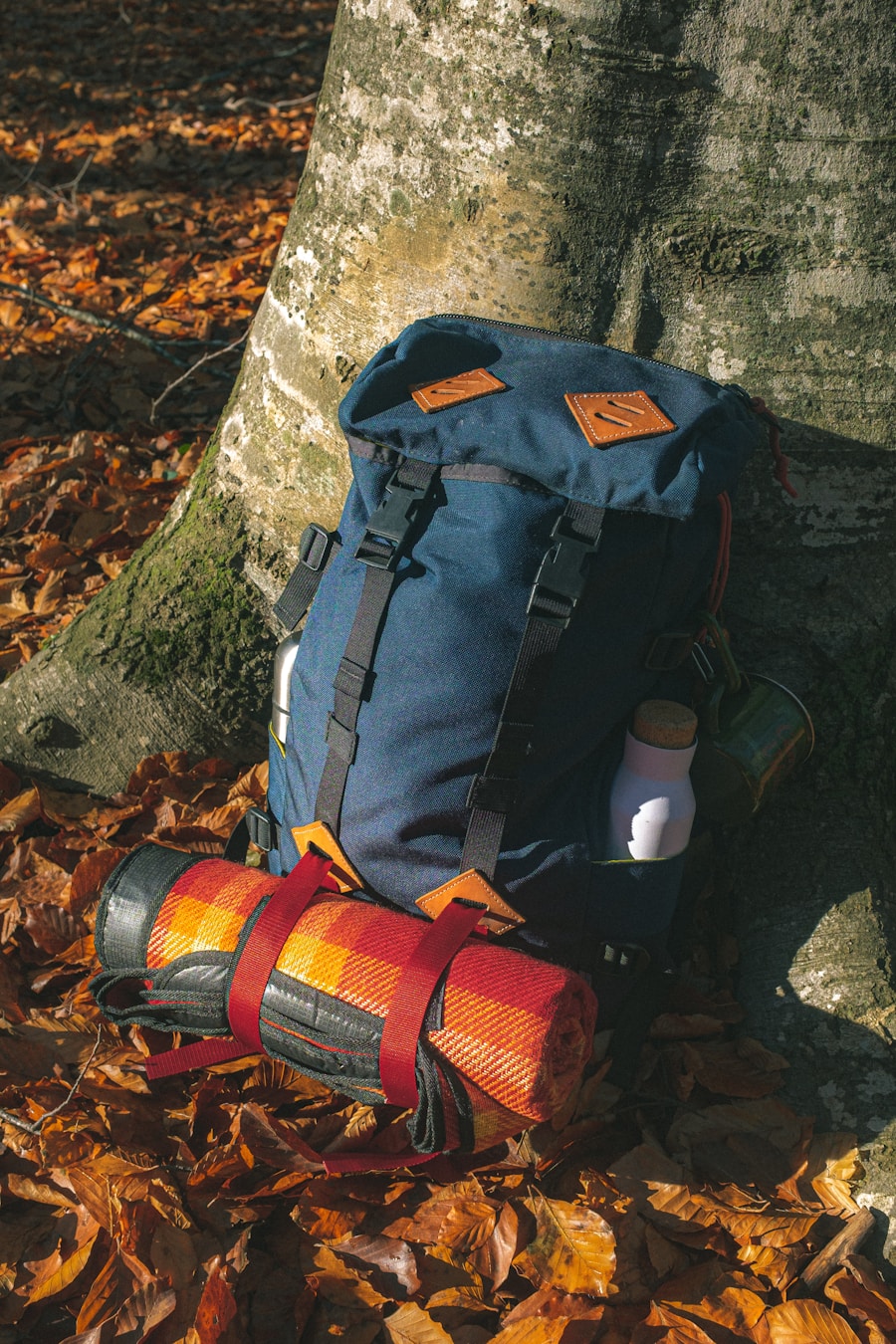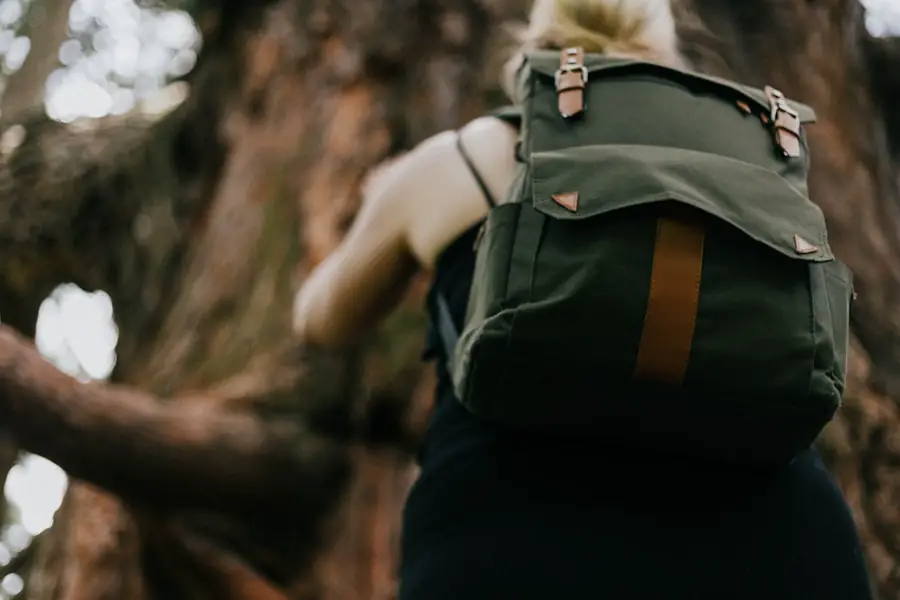Hiking backpacks come in a variety of styles, each designed to cater to specific needs and types of outdoor adventures. The most common types include daypacks, overnight packs, and multi-day backpacks. Daypacks are typically smaller, ranging from 15 to 30 liters in capacity, making them ideal for short hikes or day trips.
They usually feature a simple design with enough space for essentials like water, snacks, a first-aid kit, and a light jacket. These packs often come with hydration reservoir sleeves or pockets for water bottles, ensuring that hikers stay hydrated without the bulk of larger packs. Overnight packs, on the other hand, are designed for those who plan to spend one or two nights in the wilderness.
These packs generally range from 30 to 50 liters and provide additional space for sleeping gear, food, and cooking equipment. They often include features such as external attachment points for sleeping bags and tents, as well as compartments for organizing gear. Multi-day backpacks are the largest, typically exceeding 50 liters in capacity, and are built for extended trips.
These packs are equipped with advanced features like adjustable suspension systems, multiple access points, and specialized pockets for gear organization. Understanding these distinctions is crucial for selecting the right backpack that aligns with your hiking plans.
Key Takeaways
- There are several types of hiking backpacks, including daypacks, overnight packs, and expedition packs, each designed for different hiking needs and durations.
- When choosing the right size and fit for your hiking backpack, consider factors such as torso length, hip size, and load capacity to ensure comfort and proper weight distribution.
- High-quality hiking backpacks should have features such as adjustable suspension systems, padded hip belts, multiple compartments, and durable, water-resistant materials for optimal performance and durability.
- When packing your hiking backpack, use organization strategies such as packing heavier items closer to your back, using packing cubes or stuff sacks, and distributing weight evenly to maintain balance and stability on the trail.
- Consider top hiking backpack brands and models such as Osprey, Deuter, Gregory, and Arc’teryx, known for their quality construction, ergonomic designs, and innovative features for hikers of all levels.
- Proper care and maintenance for your hiking backpack includes cleaning it regularly, storing it in a dry, ventilated area, and inspecting for any wear and tear to ensure longevity and performance on the trail.
- Enhance your hiking experience with backpack accessories such as hydration reservoirs, rain covers, trekking pole attachments, and hip belt pockets for added convenience and functionality.
- Properly adjust and wear your hiking backpack by tightening the hip belt first, adjusting the shoulder straps, and ensuring the load lifters and sternum strap are positioned for maximum comfort and support on the trail.
How to Choose the Right Size and Fit for Your Hiking Backpack
Determining the Correct Size
The first step in this process is to measure your torso length, which is typically done by measuring from the base of your neck to the top of your hip bones. This measurement helps determine the appropriate size of the backpack’s frame. Most manufacturers provide sizing charts that correlate torso length with specific backpack sizes—small, medium, or large.
Finding a Comfortable Fit
It’s important to try on different sizes to find one that feels comfortable and secure. Once you have determined the correct size, adjusting the fit is equally important. A well-fitted backpack should sit comfortably on your hips rather than your shoulders, distributing weight evenly across your body.
Customizing the Fit
Many backpacks come with adjustable hip belts and shoulder straps that allow you to customize the fit. When trying on a backpack, load it with weight similar to what you would carry on a hike and walk around to assess how it feels. Pay attention to pressure points or areas of discomfort; a good fit should feel snug but not restrictive. Additionally, consider the pack’s load lifters—straps that connect the top of the shoulder straps to the back panel—which help pull the weight closer to your body for better balance.
Features to Look for in a High-Quality Hiking Backpack

When evaluating hiking backpacks, several key features can significantly enhance your outdoor experience. One of the most critical aspects is the suspension system, which includes the frame and how it distributes weight across your back and hips. A well-designed suspension system can reduce fatigue by allowing for better airflow and weight distribution.
Look for backpacks with adjustable frames or those that offer ventilation channels to keep your back cool during strenuous hikes. Another important feature is the material used in construction. High-quality hiking backpacks are typically made from durable, water-resistant fabrics such as nylon or polyester.
These materials not only withstand wear and tear but also protect your gear from rain and moisture. Additionally, consider pockets and compartments; a good backpack should have multiple storage options, including side pockets for water bottles, front pockets for quick-access items, and internal compartments for organization. Some backpacks even come with built-in rain covers or hydration reservoirs, adding further convenience for long hikes.
Packing Tips and Organization Strategies for Your Hiking Backpack
| Item | Weight (oz) | Volume (L) |
|---|---|---|
| Hiking Boots | 40 | 3 |
| Sleeping Bag | 32 | 10 |
| Tent | 80 | 35 |
| Water Bottle | 16 | 1 |
| First Aid Kit | 12 | 2 |
Efficient packing is crucial for maximizing space and ensuring easy access to essential items during a hike. One effective strategy is to use packing cubes or stuff sacks to compartmentalize gear. This method allows you to categorize items such as clothing, food, and cooking equipment, making it easier to find what you need without rummaging through your entire pack.
Additionally, heavier items should be packed close to your back and centered within the pack to maintain balance and stability while hiking. Another packing tip involves utilizing external attachment points effectively. Many hiking backpacks come equipped with loops or straps designed for securing items like trekking poles, sleeping pads, or even extra layers of clothing.
By using these external features wisely, you can free up internal space while keeping frequently used items easily accessible. Furthermore, consider packing a small daypack inside your larger backpack if you plan on doing shorter excursions from a base camp; this allows you to leave your larger pack behind while still carrying essentials.
Top Brands and Models of Hiking Backpacks to Consider
When it comes to hiking backpacks, several brands have established themselves as leaders in quality and innovation. Osprey is renowned for its ergonomic designs and advanced suspension systems, offering models like the Osprey Atmos AG for men and Osprey Osprey Osprey Osprey Osprey Osprey Osprey Osprey Osprey Osprey Osprey Osprey Osprey Osprey Osprey Osprey Osprey Osprey Osprey Osprey Osprey Osprey Osprey Osprey Osprey Osprey Osprey Osprey Osprey Osprey Osprey Osprey Osprey Osprey Osprey Osprey Osprey Osprey Osprey Osprey Osprey Osprey Osprey Osprey Osprey Osprey Osprey Osprey Osprey Osprey Osprey Osprey Osprey Osprey Osprey Osprey Osprey Osprey Osprey Osprey Osprey Osprey Osprey Osprey Osprey Osprey Osprey Osprey Osprey Osprey Osprey Osprey Osprey Osprey Osprey Osprey Osprey Osprey Exos 48 for women. Both models feature adjustable harnesses and ample storage options.
Another reputable brand is Gregory, known for its attention to detail and comfort-focused designs. The Gregory Baltoro (for men) and Deva (for women) are popular choices among backpackers seeking durability and functionality on long treks. These models come equipped with features like an adjustable torso length and a customizable fit system that enhances comfort during extended use.
For those on a budget or looking for lightweight options, REI Co-op offers a range of affordable yet reliable backpacks such as the REI Co-op Flash pack series, which balances weight savings with essential features.
Proper Care and Maintenance for Your Hiking Backpack

To ensure longevity and optimal performance from your hiking backpack, proper care and maintenance are essential practices that every hiker should adopt. After each trip, it’s advisable to clean your backpack according to the manufacturer’s instructions. Most backpacks can be spot-cleaned with mild soap and water; however, some may be machine washable on a gentle cycle if specified by the manufacturer.
Always remove any detachable components like hip belts or hydration reservoirs before washing. In addition to cleaning, regular inspections of your backpack can help identify wear and tear before they become significant issues. Check zippers for smooth operation, inspect seams for fraying or damage, and ensure that buckles are functioning correctly.
If you notice any issues, address them promptly—many manufacturers offer repair services or replacement parts that can extend the life of your pack significantly.
Hiking Backpack Accessories and Add-Ons to Enhance Your Experience
Enhancing your hiking experience often involves selecting the right accessories that complement your backpacking setup. One popular add-on is a hydration reservoir or bladder system that fits into designated compartments within many modern backpacks. This system allows hikers to drink water hands-free through a tube while on the move, promoting hydration without needing to stop frequently.
Another useful accessory is a pack rain cover that provides an extra layer of protection against unexpected weather changes. These lightweight covers can be easily stowed when not in use but can save your gear from getting soaked during sudden downpours. Additionally, consider investing in trekking pole attachments if you plan on using poles; many backpacks come equipped with specific loops or straps designed for this purpose.
Tips for Properly Adjusting and Wearing Your Hiking Backpack for Maximum Comfort and Support
Properly adjusting and wearing your hiking backpack is crucial for maximizing comfort during long treks. Start by adjusting the shoulder straps so they fit snugly but do not restrict movement; they should hold the pack close to your body without causing discomfort at pressure points. The hip belt should be positioned over your hip bones rather than your waist; this allows it to bear most of the load’s weight while freeing up your shoulders.
Once you have adjusted the straps, take a moment to check the load lifters—these straps connect the top of the shoulder straps to the back panel of the pack. Tightening these can help pull the weight closer to your center of gravity, improving balance and reducing strain on your back during hikes. Finally, remember that comfort can also be influenced by how you distribute weight within your pack; heavier items should always be packed close to your back while lighter items can be placed further away from your body.
By understanding these various aspects of hiking backpacks—from types and sizes to features and maintenance—you can make informed decisions that enhance your outdoor adventures while ensuring comfort and efficiency on every hike.
When considering what is the best hiking backpack, it is important to also think about the best time to travel to your hiking destination. A seasonal guide like the one found at TakeTravelInfo can provide valuable insights on when to plan your hiking trip to ensure the best weather conditions and overall experience. By combining the right backpack with the right timing, you can make the most of your outdoor adventure.
FAQs
What features should I look for in the best hiking backpack?
When looking for the best hiking backpack, consider features such as capacity, comfort, durability, weight, organization, and ventilation. A good hiking backpack should also have adjustable straps, a padded hip belt, and multiple pockets for easy access to essentials.
What is the ideal capacity for a hiking backpack?
The ideal capacity for a hiking backpack depends on the length of your hike and the amount of gear you need to carry. For day hikes, a 20-30 liter backpack is sufficient, while for overnight or multi-day hikes, a 40-50 liter backpack is recommended.
What are the different types of hiking backpacks?
There are several types of hiking backpacks, including daypacks, overnight backpacks, and multi-day backpacks. Daypacks are smaller and designed for short hikes, while overnight and multi-day backpacks are larger and can accommodate more gear for longer trips.
What materials are best for hiking backpacks?
The best materials for hiking backpacks are ripstop nylon, Cordura, and Dyneema. These materials are lightweight, durable, and water-resistant, making them ideal for withstanding the rigors of hiking and outdoor activities.
How should I properly fit a hiking backpack?
To properly fit a hiking backpack, adjust the shoulder straps, hip belt, and sternum strap to distribute the weight evenly across your body. The hip belt should sit on your hips, not your waist, and the shoulder straps should be snug but not too tight.
What are some popular brands for hiking backpacks?
Popular brands for hiking backpacks include Osprey, Deuter, Gregory, Arc’teryx, and REI. These brands are known for their quality, durability, and comfort, making them popular choices among hikers and outdoor enthusiasts.
